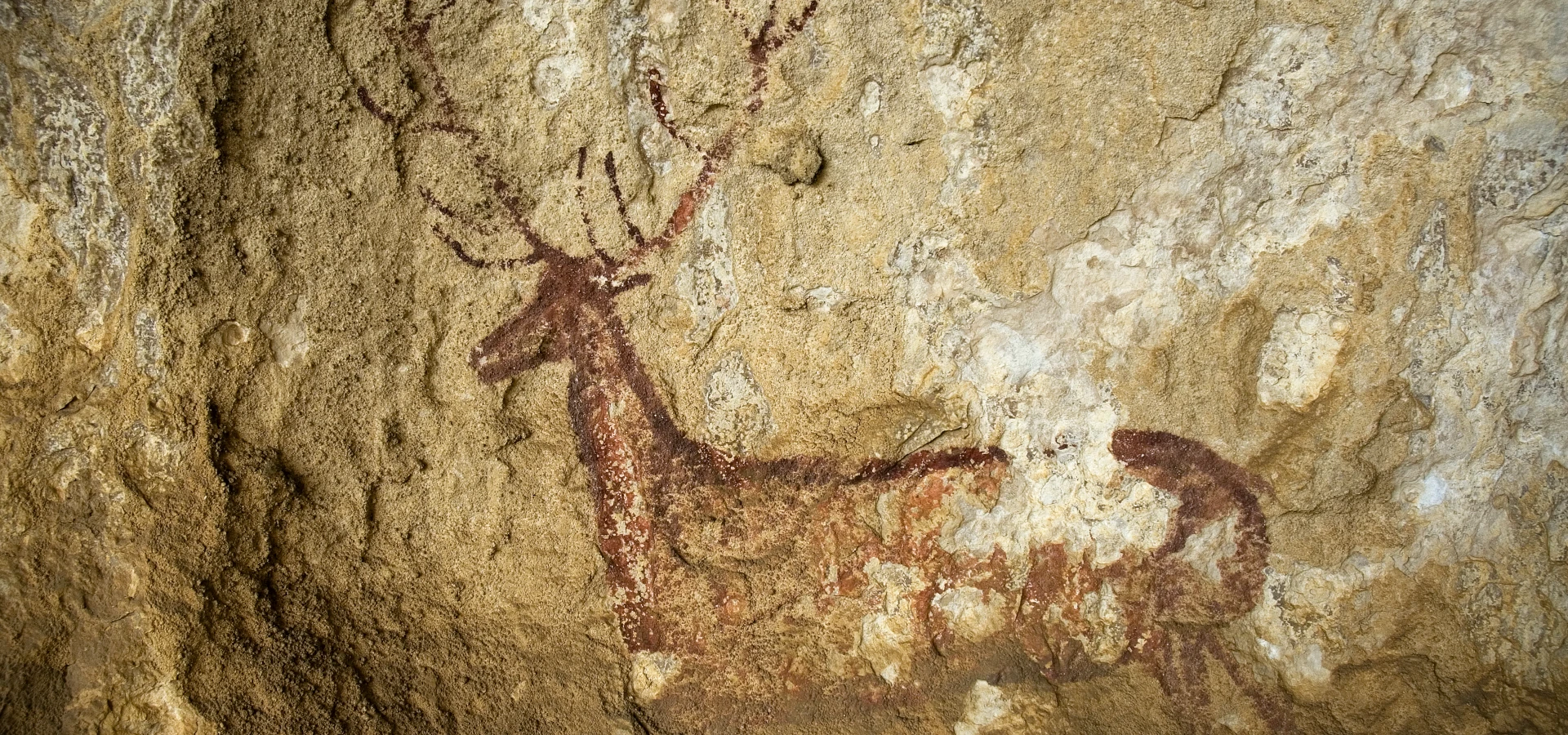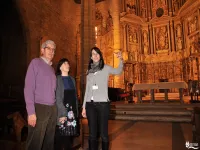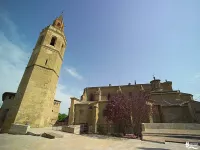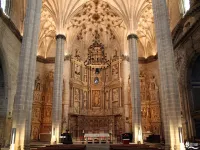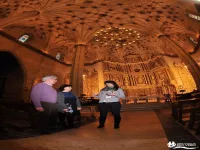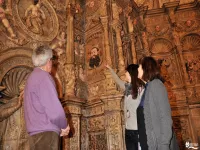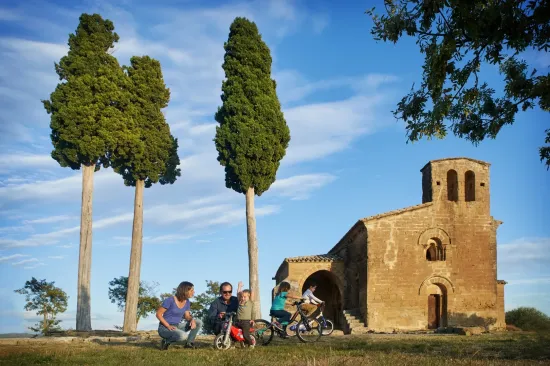It occupies the site of an ancient Muslim mosque and the original cathedral, consecrated by the first bishop of Barbastro in 1101 after the conquest of the city by Pedro I. Archaeological remains are noticeable on the northern facade of the back cloister (13th century).
The current cathedral was constructed between the years 1517 and 1533 and follows the style of a hall church. The church has three naves of equal height, covered by ribbed star-shaped vaults, supported by willowy fasciculate columns. The characteristic gothic elements and Renaissance design are preserved, which grants the space a special uniqueness.
Architects Juan de Segura and Juan de Sariñena took part in the design and construction of the cathedral. The side chapels were finalised during the 17th and 18th centuries.
The cathedral contains magnificent examples of furniture art such as several altarpieces and choir stalls from the 16th century.
One of the best pieces is the main altarpiece dedicated to the Assumption of the Virgin, made from alabaster and polychrome wood, constructed between mid 17th to early 18th century. Part of the base is the work of Damián Forment.
Located on both sides of the main altar, you will find altarpieces dedicated to San Ramón (17th century) and to San Pedro Apostol (18th century), the latter is by Antonio Malo, a sculptor from Barbastro. The altarpiece of San Victorián, which came from the monastery of the same name in Sobrarbe, was installed in the chapel of San José, whose central gothic panel is attributed to Bartolomé Bermejo.
The portal of the side chapels have decorative baroque features, such as the chapel of Santo Cristo which preserves in its interior the sculpture of Cristo, underneath a baldachin, and a sculpture of San Carlos Borromeo.
Next to the eastern door is the free-standing bell tower, built in the 12th century and remodelled in the 17th century. It is constructed on the foundations of the original minaret.

